Fluted surfaces are a versatile element of modern kitchen design. Their soft vertical lines add texture, rhythm, and depth to a space, harmonizing with Japanese, Scandinavian, and warm minimalism. They are aesthetic but also quite useful: they help divide a space into zones, hide signs of wear, soften shapes, and add architectural expressiveness.
Fluting is appropriate on cabinet fronts, islands, backsplashes, and decorative inserts, creating a sense of craftsmanship and thoughtfulness. For those renovating their interior, it is a way to add expressiveness without disrupting the restrained aesthetic. Below are ten stylish and adaptable ideas that will make your kitchen modern, organized, and comfortable.
1. Fluted Panel on a Kitchen Island
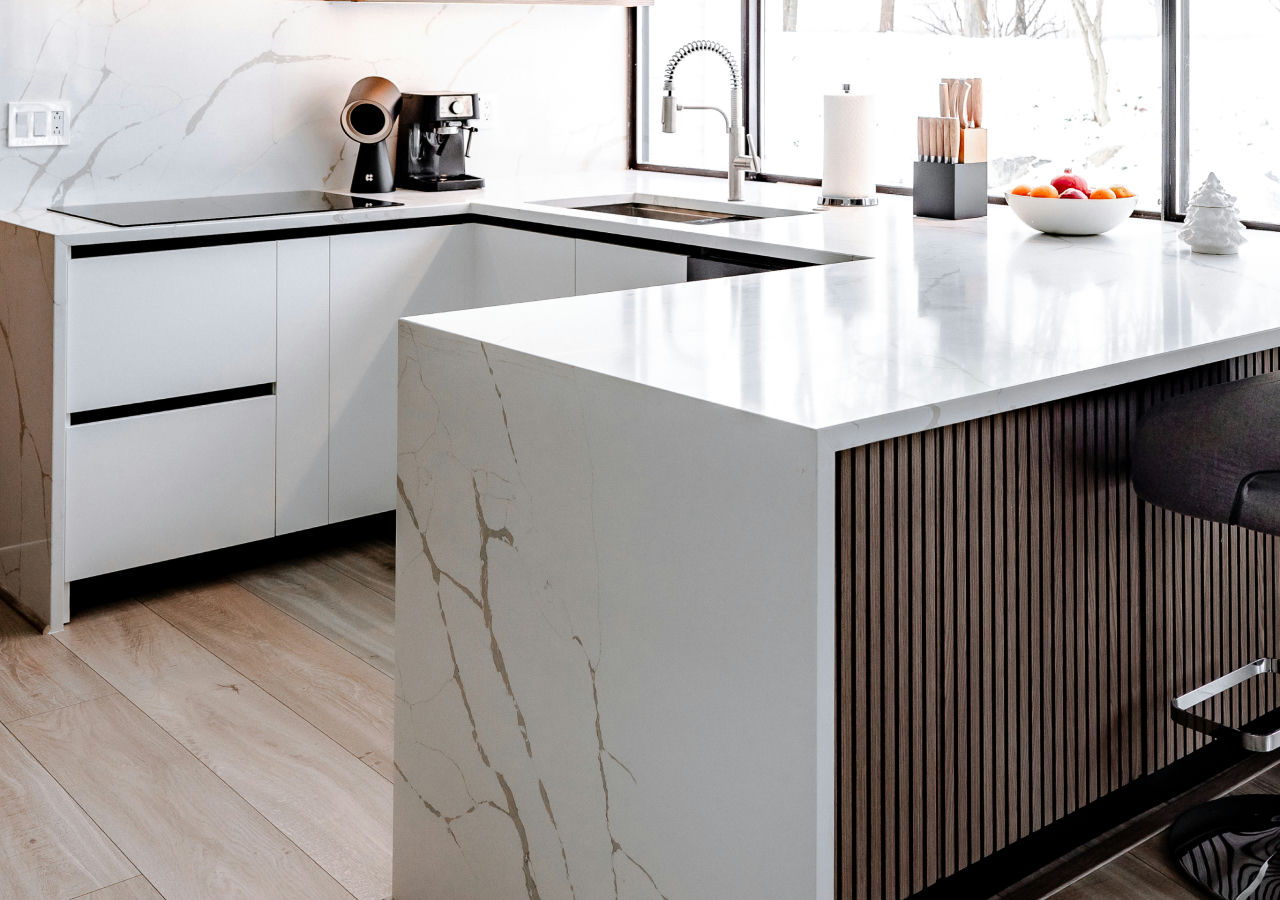
A fluted island panel is a good choice when you want the island to feel more like a piece of furniture than just a block of cabinetry. It gently draws attention to the island without relying on bold color or strong contrast.
The fluted panel on the underside of the kitchen island adds warmth and visual complexity, reminiscent of handcrafted furniture. Vertical grooves create a play of light and shadow that changes throughout the day, giving the surface depth without being overly expressive.
The fluted kitchen island panel is especially striking in spacious or extended kitchens where the island is visible from various angles. Warm wood tones and veneered textures enhance this effect, making the island the focal point of the kitchen.
2. Fluted Panels Wrapped Around the Island
.webp)
Wrapping the entire island in fluting makes it read as one cohesive volume from every angle. This approach works especially well in open-plan spaces where the island is visible from the living or dining area.
Applying fluting not only to a single panel, but also to the sides of the island, can give it a solid, monolithic appearance. This technique hides the joints, visually softens the shape, and makes the island appear custom-made.
A fully fluted kitchen island fits particularly well in interiors that value tactility and simplicity, such as Scandinavian or Japandi spaces. Its continuous relief makes even a large island appear visually light and balanced.
3. Fluted Kitchen Cabinet Fronts
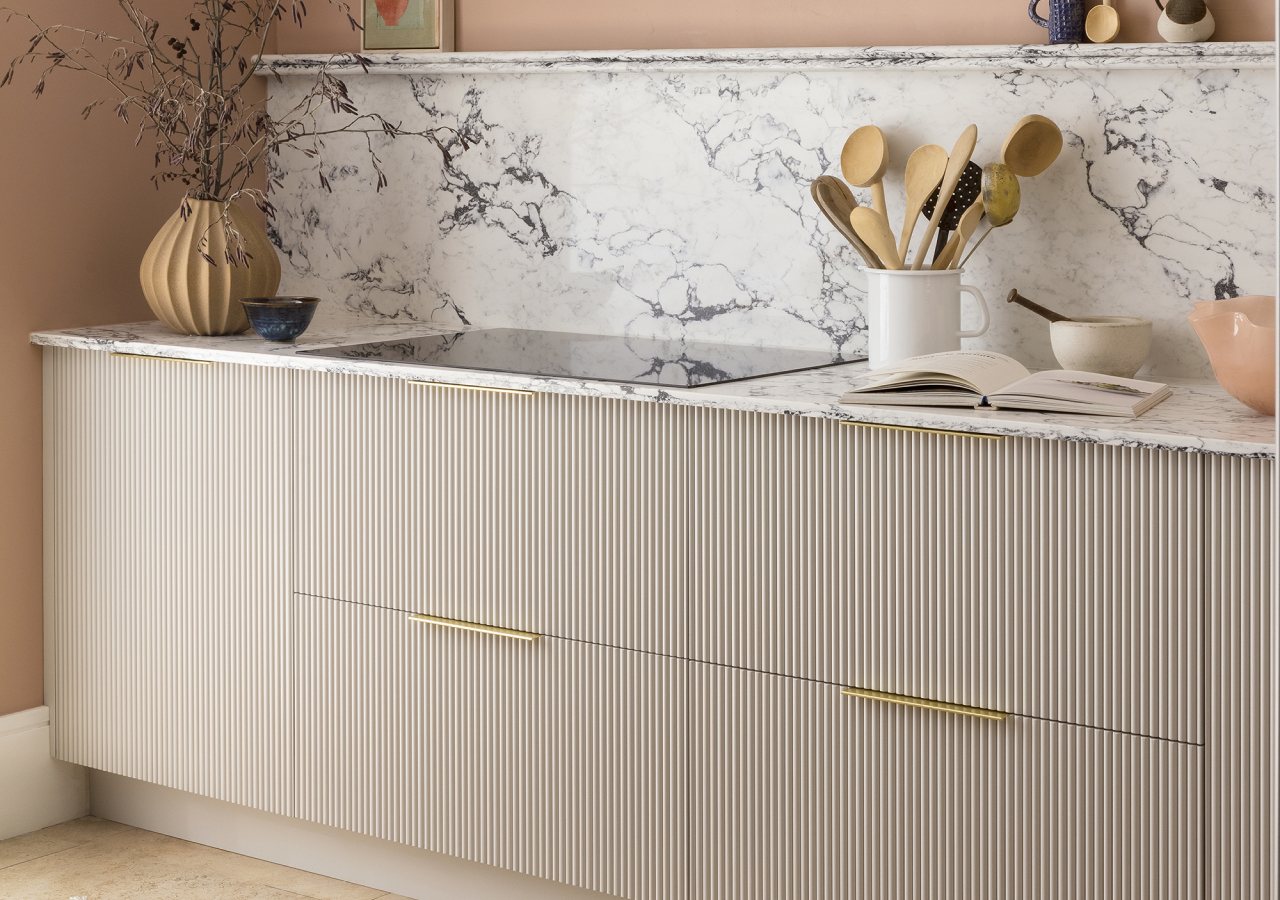
Fluted fronts are a quiet way to give simple cabinetry more presence. They suit homeowners who want the kitchen to feel designed and tactile, but still calm and minimal.
Fluted kitchen cabinet fronts add subtle texture without compromising the clean lines of a modern design. They add dimension to the surface, making it more aesthetically pleasing without disrupting the visual calm.
Fluting is often used selectively, such as on base cabinets under the sink or in specific areas, to emphasize contrast with smooth elements. It's a way to give a kitchen personality, warmth, and architectural structure without overwhelming the senses.
4. Full-Height Fluted Tall Cabinets

Full-height fluted cabinets help large storage walls look intentional rather than bulky. They keep generous storage but add enough rhythm to stop the elevation from feeling flat.
Tall cabinets with fluted fronts introduce a bold architectural accent to the interior. Their vertical relief visually elevates the space, making ceilings feel higher and walls slimmer and more refined.
Fluted fronts look especially impressive in pantries, built-in modules, and appliance zones, where large surfaces need to be structured. The texture prevents these areas from feeling overwhelming, instead adding depth and rhythm. This solution blends functionality with a clean, understated aesthetic.
5. Fluted Glass Cabinets
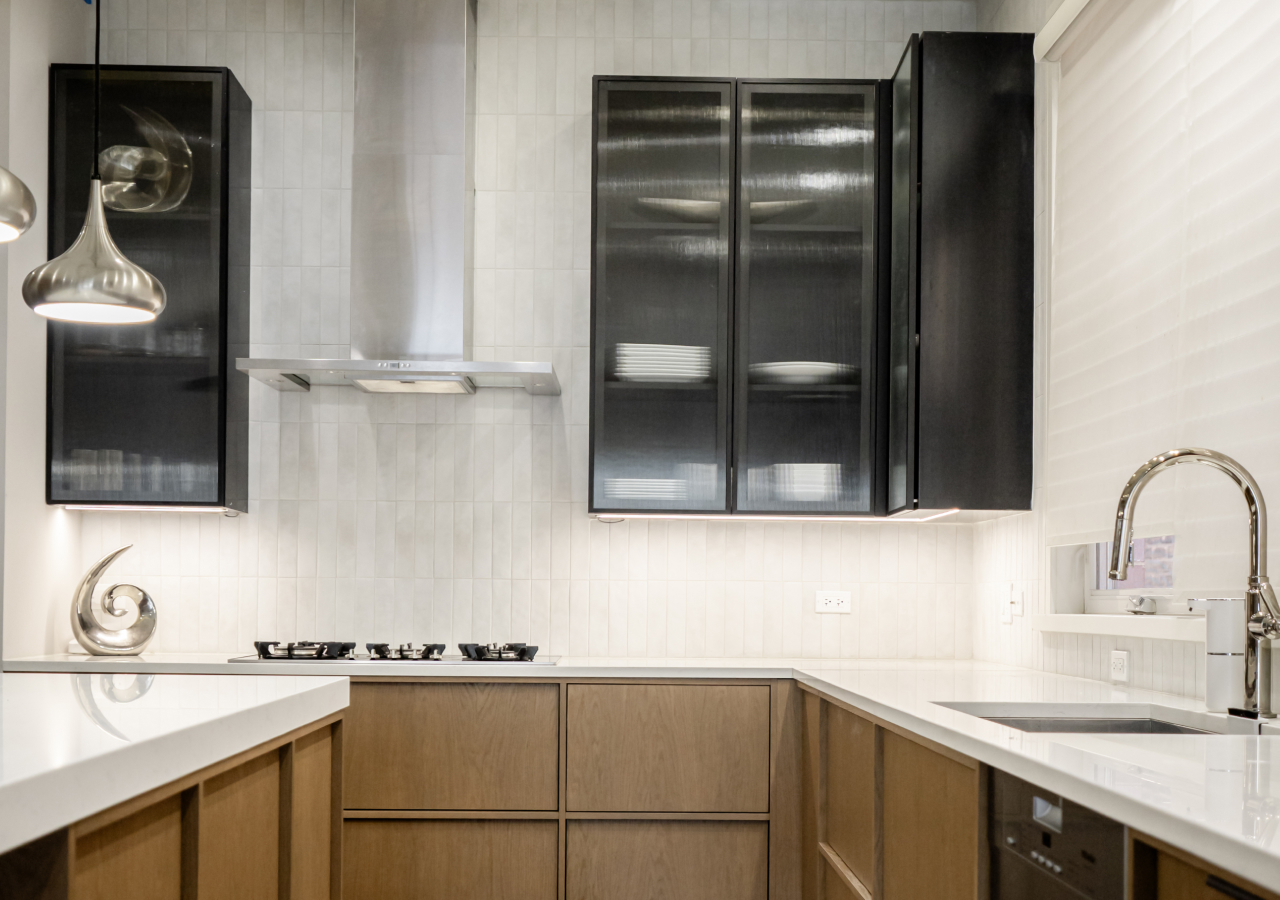
Fluted glass is ideal if you like the idea of display storage but don’t want to constantly style the shelves. It softens what’s inside while still letting light and a hint of color come through.
Fluted glass creates a delicate balance between privacy and visual lightness. Its structure blurs the outlines of the contents, softening the perception and creating a diffused glow when illuminated.
Fluted glass fronts are a stylish addition to upper cabinets and bar areas, offering a touch of sophistication without complete transparency. When combined with warm wood tones and modern lighting fixtures, they look understated yet elegant.
6. Curved Fluted Kitchen Islands

A curved fluted island introduces both movement and softness into the room. It’s especially helpful in walkthrough kitchens, where rounded shapes make circulation more comfortable.
The kitchen island's rounded shapes, highlighted by fluted panels, provide an added touch of elegance. Vertical lines emphasize the curve, creating a sense of fluidity and visual movement.
This design is a perfect fit for Japandi-inspired interiors, which value natural shapes and tactile materials. The curved, fluted island decorates the space and improves its ergonomics by forming a soft, inviting center for the kitchen.
7. Fluted Kitchen Backsplash
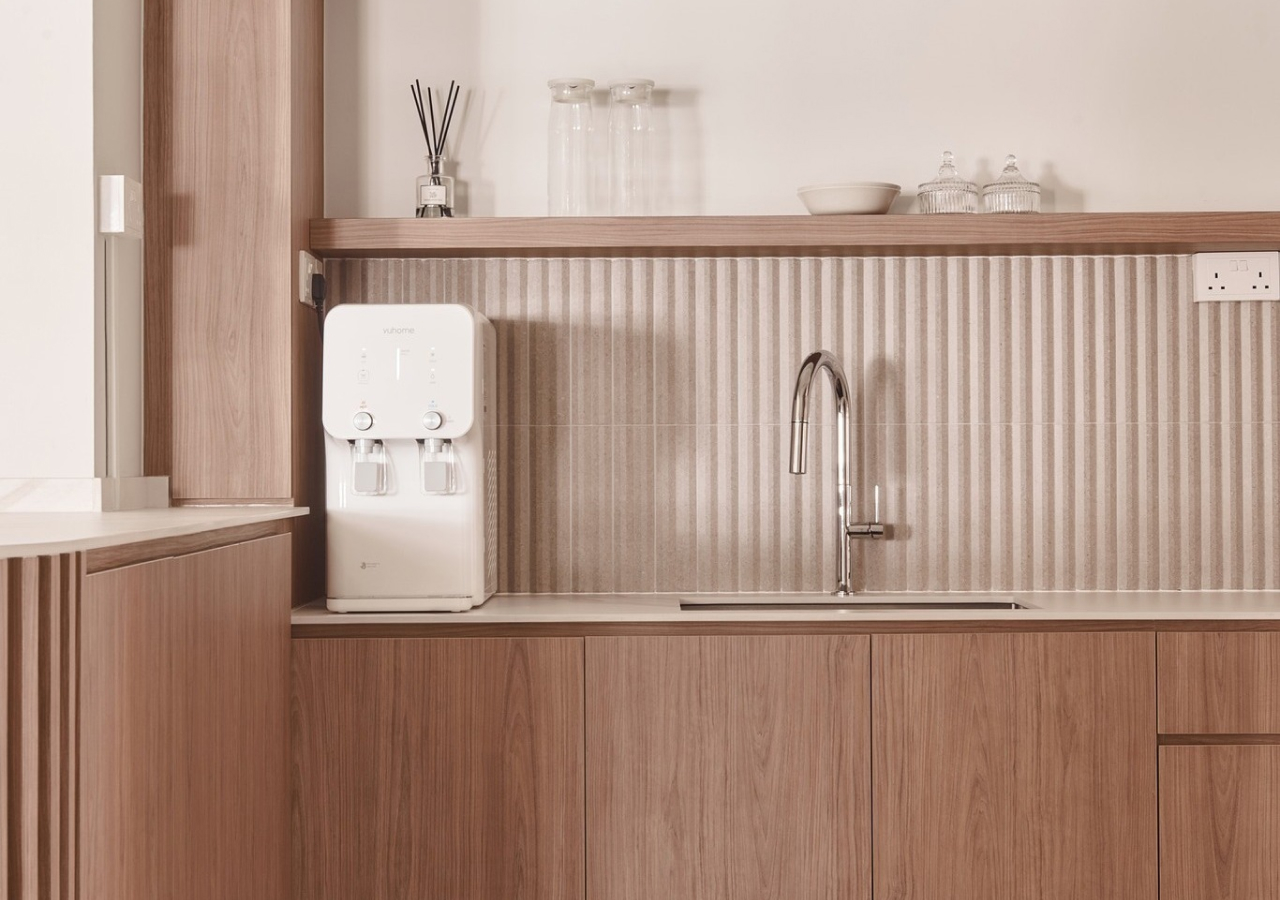
A fluted backsplash works well when you want a simple color palette but still need some depth on the walls. It adds structure behind the worktop without bringing in pattern or strong graphics.
A fluted backsplash adds subtle volume to the cooking area, creating a sense of depth without unnecessary details. Its textured surface forms a multi-layered backdrop while remaining practical and easy to clean.
The fluted backsplash is especially striking in monochrome kitchens, where it serves as an alternative to decorative elements. This design creates a calm visual foundation, giving the interior a modern yet cozy character.
8. Fluted Range Hood Cover
.webp)
A fluted hood cover is a smart option when the hood sits on a main wall and can’t easily be hidden. It turns a technical element into a clean architectural feature that links back to the cabinetry.
The fluted range hood trim transforms a utilitarian detail into a visual accent. The relief emphasizes the shape, adding architectural expressiveness and contrast to smooth cabinet fronts.
When combined with a stone or matte finish, the fluted texture adds depth and makes the hood noticeable yet not intrusive. The fluted range hood is ideal for those who want to accentuate a feature while preserving the integrity and serenity of the overall design.
9. Internal Fluted Details
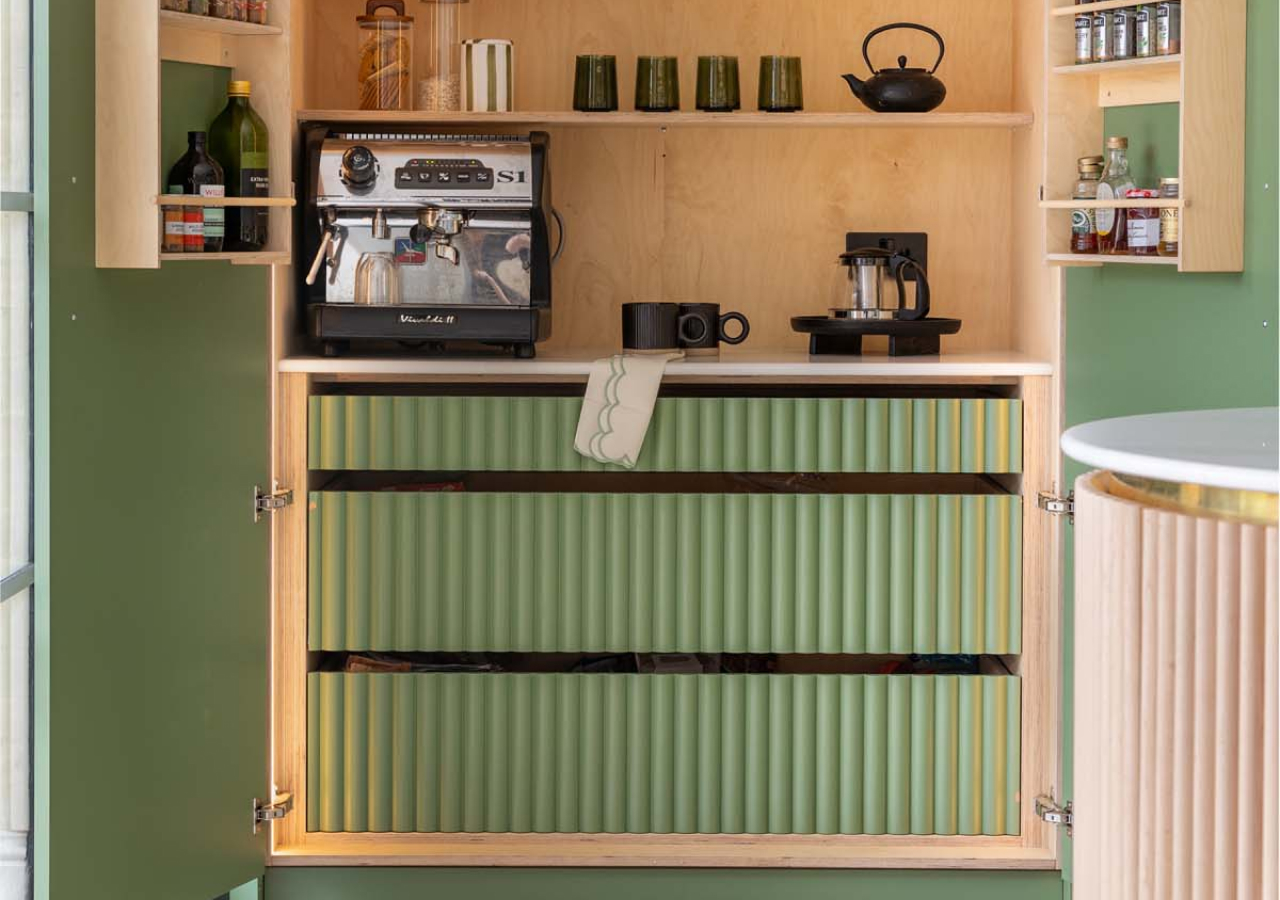
Internal fluted details are a way to keep the outer fronts very calm while still enjoying texture in everyday use. They make open shelves, niches, and cabinet interiors feel more considered and crafted.
Fluted panels inside open sections, shelves, and niches add personality and sophistication to the interior. These details become especially noticeable when opening doors or incorporating open storage.
The use of fluted panels in these areas creates a sense of refined detailing and high-quality craftsmanship. It’s an unobtrusive way to visually enrich the kitchen while maintaining a consistent, fluted aesthetic even in hidden zones.
10. Fluted Decorative Accents
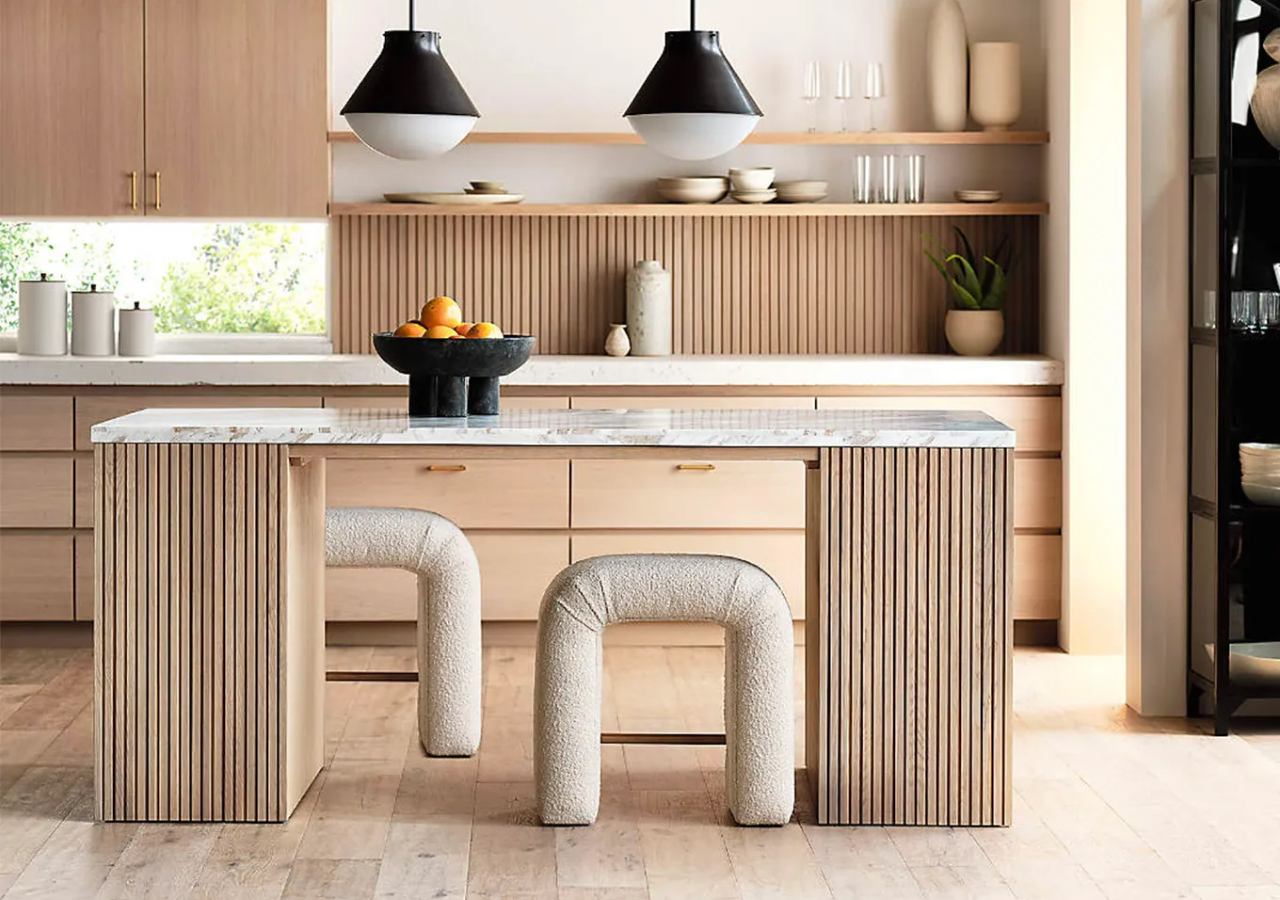
Small fluted accents are ideal if you’re just starting to work with this texture or have a compact kitchen. They let you introduce the motif in a subtle way and expand it later if you like the effect.
Those who prefer subtle accents can use fluting without covering large areas. Think slim frames around open shelves, decorative legs on peninsulas, or vertical inserts on appliance-garage fronts.
Fluted details unify the visual language of the kitchen and give it a refined look. They blend particularly well with smooth stone surfaces, warm wood, and matte textures, creating a balanced, multi-layered composition.
Conclusion
Fluted surfaces bring a rare combination of modern simplicity and crafted warmth to the kitchen. Whether used on the island, across cabinetry, or in subtle architectural accents, they create depth, soften clean lines, and make the space feel more considered and serene. For homeowners seeking a textured yet timeless aesthetic, fluting remains one of the most versatile design tools.
If you’re exploring ways to bring quiet character into your renovation, take a look at Corner Renovation’s collections or book a consultation to see how fluted elements can fit naturally into your layout and lifestyle.





